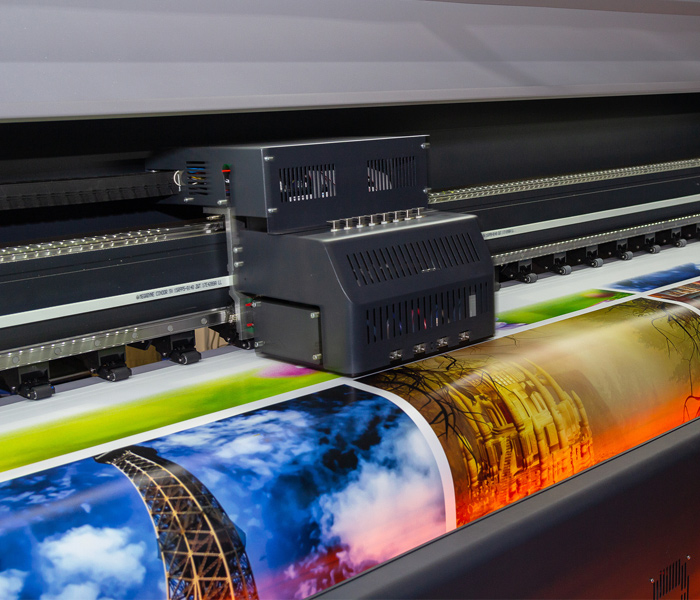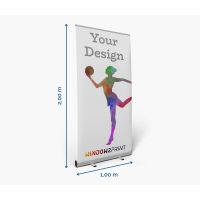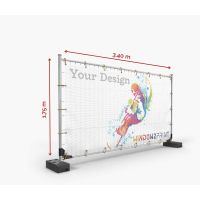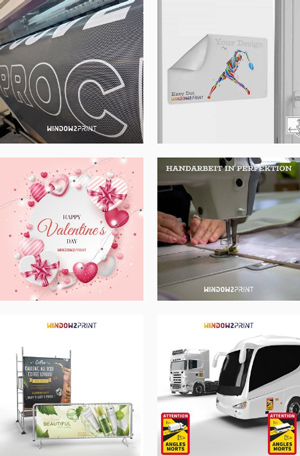What is digital printing and what makes it so special?
The printing process includes printing technologies that do not require a die. The print motif is transferred directly from a file from the computer to the corresponding printing machine.
That means, all you need to print is a file in digital form. The printing system converts the data record accordingly and printing can then be started. The best part is that you can add different content to each page.
Which digital printing processes are used most often?
Solvent printing
- The process uses weather-resistant inks. This printing process is used to print such fabrics as Frontlit banner ads, mesh, blockout and a wide range of foils and papers.
Sublimation printing
- is used for printing on polyester fabrics such as flags. This is where water-based inks are used. The printed textiles are lightweight and easy to fold.
Latex printing
- Water-based inks ensure odorlessness and are environmentally friendly. Therefore, the materials printed with latex inks such as wallpaper or foils can be used in e.g. schools, kindergartens, hospitals.
UV printing
- This printing technology is ideally suited for printing on rigid materials such as vinyl, plastics and foils. In the process, the inks are hardened with ultraviolet light, making the prints weather and UV resistant.
Digital printing or screen printing?
We'll start with our tips to help answer that question. Digital printing has a colour reproduction of about 98% and excellent print quality. Digital printing has the advantage over other types of technology because the unit price of the product is attractive even with small print runs. The production of each subsequent item costs the same.
Screen printing technology is less economical when it comes to printing a small number of pieces. This technology includes fixed costs of preparing a file for printing, therefore, with a small quantities, the unit cost of the product is higher compared to digital technology. With very large expenditures, this cost gradually decreases, and each subsequent item costs less.
In case the printout is very large and does not fit in one piece on the material, it must be divided into blocks. According to banners, individual parts are welded together so that the entire graphic is finally visible. The client provides us with a file with his graphics, and we make sure that he receives the highest quality printout. In case of screen printing, the formats of works in one piece are much smaller. In digital printing, we can carry out orders in one piece in the case of banner materials up to 5 m in length of the shorter side.

 DE
DE ES
ES FR
FR IT
IT





The information below is required for social login
Sign In
Create New Account